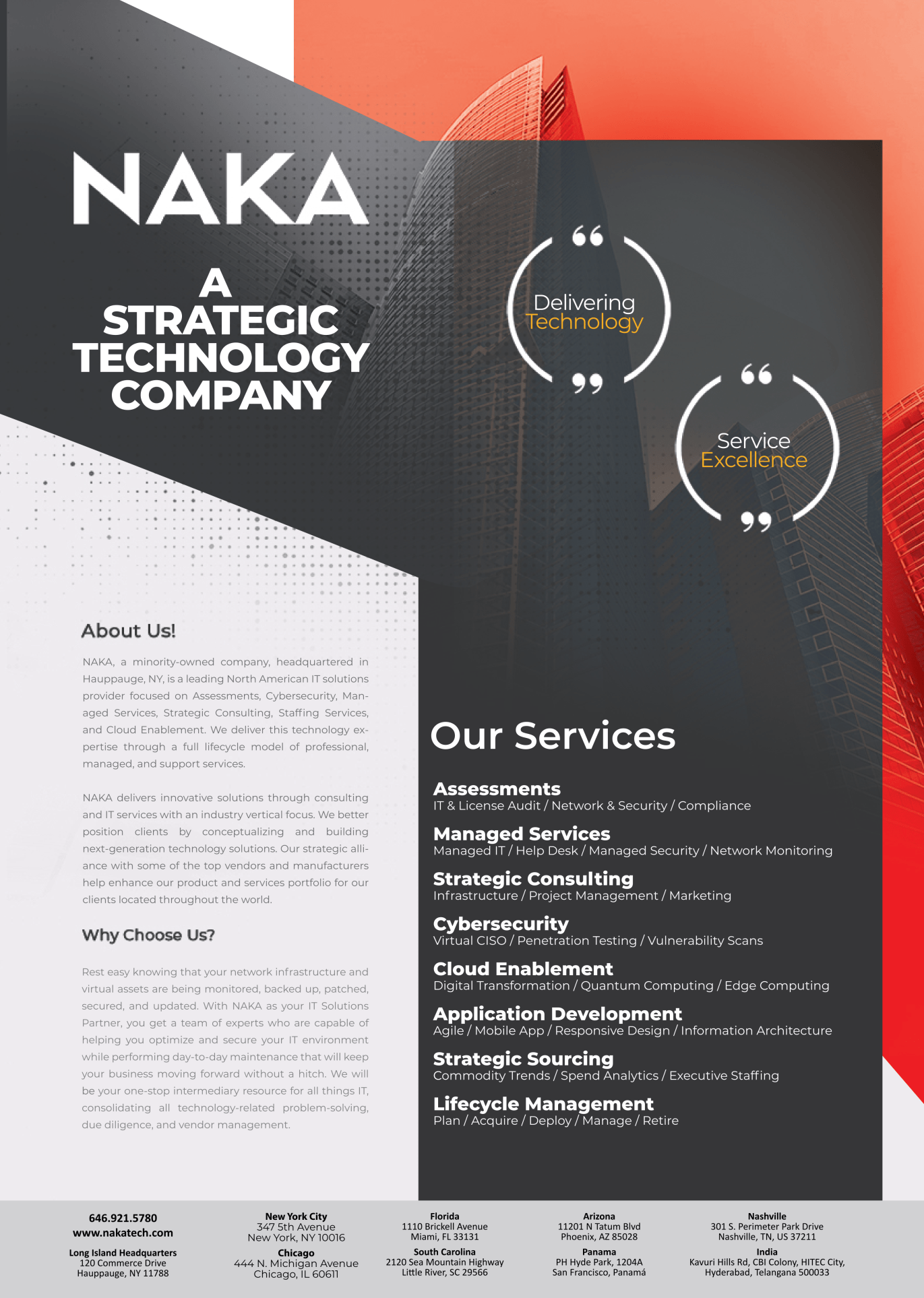Creating a Dynamic Workplace: Strategies and Tools

Creating a Dynamic Workplace: Strategies and Tools
For the purpose of encouraging creativity, boosting employee happiness, and increasing overall productivity, a dynamic workplace is essential. It adapts to changes, encourages collaboration, and leverages technology to enhance efficiency. This article explores various strategies and tools to create a vibrant and effective work environment.
Understanding a Dynamic Workplace
A dynamic workplace is an environment that evolves with the changing needs of the business and its employees. It prioritizes flexibility, adaptability, and continuous improvement. The goal is to create a space where employees feel motivated and supported to perform at their best. To enhance the process of creating it, consider leveraging the expertise of professional services. NakaTech offers comprehensive solutions tailored to your business needs, including advanced technology integration, employee engagement strategies, and much more.
Key Characteristics of a Dynamic Workplace
- Flexibility: Adaptable work hours and environments. Flexibility allows employees to manage their work-life balance better, leading to increased job satisfaction and reduced burnout. It includes options like remote work, flexible working hours, and adaptable roles that can change as needed
- Collaboration: Emphasis on teamwork and open communication. A dynamic workplace solution encourages employees to share ideas, collaborate on projects, and support one another. This can be facilitated through open office designs, regular team meetings, and collaborative technologies like video conferencing and project management tools.
- Innovation: Encouraging creative problem-solving and new ideas. It fosters an environment where employees feel safe to take risks and think outside the box. This can be supported by offering training and development opportunities, as well as recognizing and rewarding innovative ideas.
- Technology Integration: Utilizing modern tools to enhance productivity. From communication platforms to project management software, technology plays a vital role in creating a workplace dynamic. It helps streamline processes, improve communication, and make information more accessible.
- Employee Well-Being: Giving employees’ pleasure and health first priority. A workplace dynamic places a strong emphasis on the well-being of its employees. This includes providing a healthy work environment, promoting work-life balance, offering mental health support, and fostering a positive company culture.
Strategies for Creating a Dynamic Workplace
To transform your workplace into a dynamic environment, consider implementing the following strategies:
Foster a Culture of Continuous Learning
Encourage staff members to advance their knowledge and abilities on a constant basis. This can be achieved through:
- Training Programs: Regularly offer workshops and courses relevant to employees’ roles and interests.
- Mentorship: Establish mentorship programs where experienced employees can guide and support newer or less experienced team members.
- Online Learning: Provide access to online learning platforms where employees can learn at their own pace.
Embrace Flexibility
Flexible work arrangements are becoming increasingly important. To implement flexibility in your workplace:
- Remote Work Options: Allow employees to work from home or other locations when possible.
- Flexible Hours: Offer flexible working hours that enable employees to choose their start and end times.
- Adaptable Workspaces: Design the office space to accommodate different working styles, including quiet zones for focused work and collaborative areas for team projects.
Encourage Open Communication
Effective communication is vital for a dynamic workplace. To promote open communication:
- Frequent Meetings: Organize frequent team meetings to talk about projects, resolve issues, and provide updates.
- Feedback Systems: Implement systems where employees can provide and receive feedback regularly.
- Open-door Policy: Encourage managers and leaders to maintain an open-door policy where employees feel comfortable discussing their ideas and concerns.
Promote Collaboration
Collaboration drives innovation and problem-solving. To enhance collaboration:
- Collaborative Tools: Use tools like Slack, Microsoft Teams, or Trello to facilitate teamwork and project management.
- Team-building Activities: Plan frequent team-building exercises to bolster bonds and enhance collaboration.
- Cross-functional Teams: Create cross-functional teams that bring together employees from different departments to work on projects.
Integrate Advanced Technology
Leverage technology to enhance productivity and streamline processes. Consider the following tools:
- Project Management Software: Tools like Asana, Monday.com, and Basecamp help manage projects, track progress, and ensure deadlines are met.
- Communication Platforms: Platforms like Zoom, Microsoft Teams, and Slack facilitate real-time communication and collaboration.
- Automation Tools: Use automation tools to handle repetitive tasks, freeing up employees to focus on more strategic activities.
Prioritize Employee Well-being
A contented and well-groomed worker is more engaged and productive. To support employee well-being:
- Wellness Programs: Implement wellness programs that promote physical and mental health, such as gym memberships, yoga classes, and mental health resources.
- Work-life Balance: Encourage employees to maintain a healthy work-life balance by setting clear boundaries and respecting personal time.
- Positive Work Environment: Create a positive work environment by recognizing achievements, promoting inclusivity, and addressing any workplace issues promptly.
Tools for Creating a Dynamic Workplace
Implementing the right tools is essential for creating a dynamic workplace. The following are some top tools to think about:
Communication Tools for Dynamic Workplace
Effective communication is the backbone of a dynamic workplace. Key tools include:
- Slack: A chat app that makes teamwork and real-time communication easier.
- Microsoft Teams: An all-in-one collaboration tool that includes chat, video conferencing, and file sharing.
- Zoom: A video conferencing technology that makes online meetings, webinars, and conference calls possible.
Project Management Tools
Project management tools help streamline workflows and keep teams on track. Popular options include:
- Asana: A project management tool that allows teams to organize tasks, set deadlines, and track progress.
- Trello: A visual project management application that arranges tasks and projects using cards, lists, and boards.
- Monday.com: A flexible work operating system that enables teams to manage projects, workflows, and everyday work.
Productivity Tools
Productivity tools enhance efficiency and help manage time effectively. Consider the following:
- Evernote: A note-taking app that helps organize notes, tasks, and to-do lists.
- Google Workspace: A suite of productivity tools including Gmail, Docs, Drive, and Calendar.
- RescueTime: A time-tracking application that offers productivity-boosting insights and keeps track of how much time is spent on different tasks.
Wellness and Employee Engagement Tools
Supporting employee well-being and engagement is critical. Useful tools include:
- Headspace for Work: A mindfulness and meditation app that promotes mental health and well-being.
- Officevibe: An employee engagement platform that gathers feedback and provides insights to improve workplace culture.
- Limeade: A well-being platform that offers programs and resources to support physical and mental health.
Conclusion
Creating a dynamic workplace requires a multifaceted approach that includes fostering a culture of continuous learning, embracing flexibility, encouraging open communication, promoting collaboration, integrating advanced technology, and prioritizing employee well-being. By implementing these strategies and utilizing the right tools, organizations can create an environment that adapts to change, supports innovation, and enhances overall productivity.
Partnering with experts like NakaTech can provide the additional support and resources needed to achieve these goals. A dynamic workplace not only benefits the employees but also contributes to the long-term success and growth of the organization.



